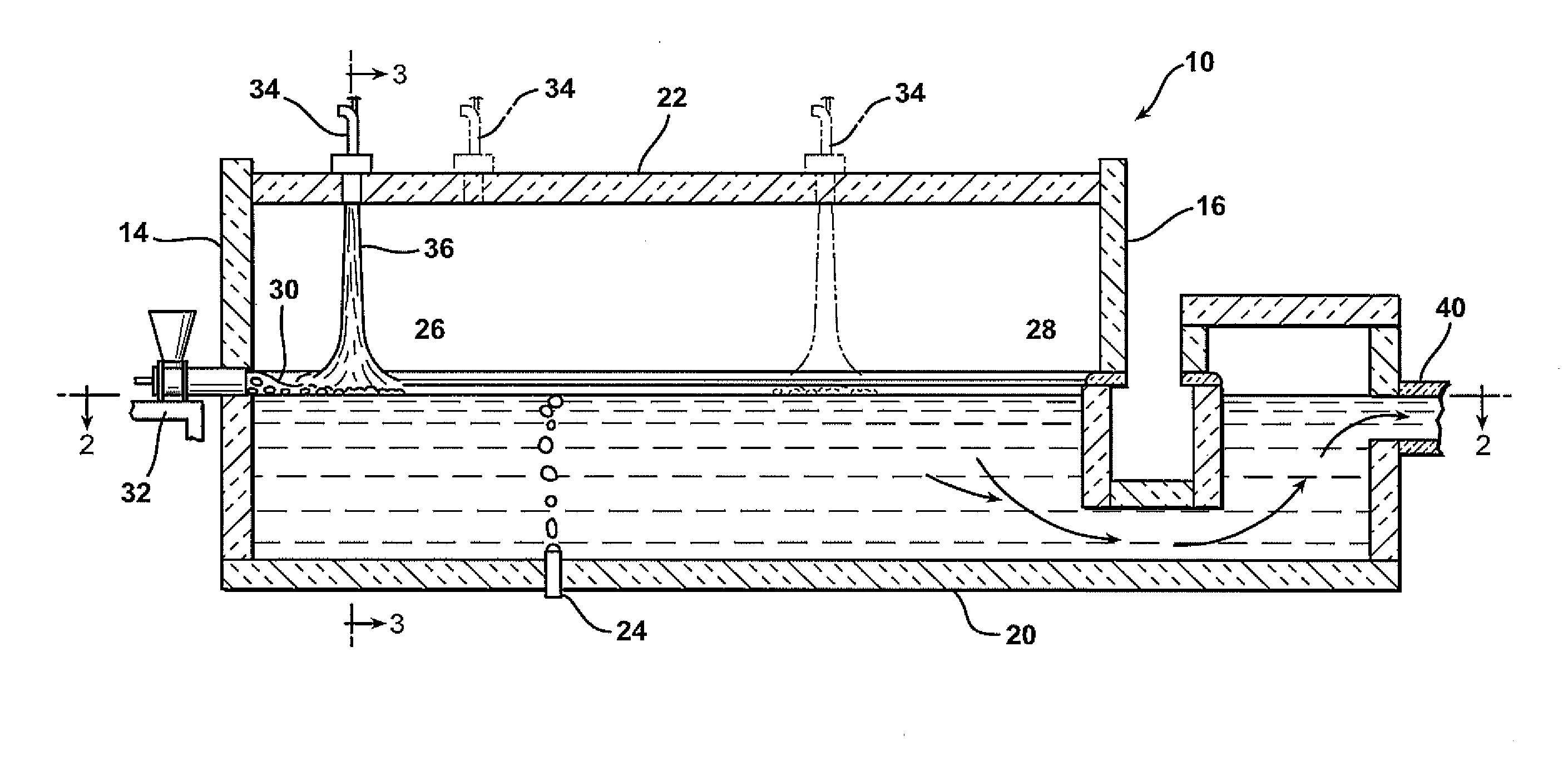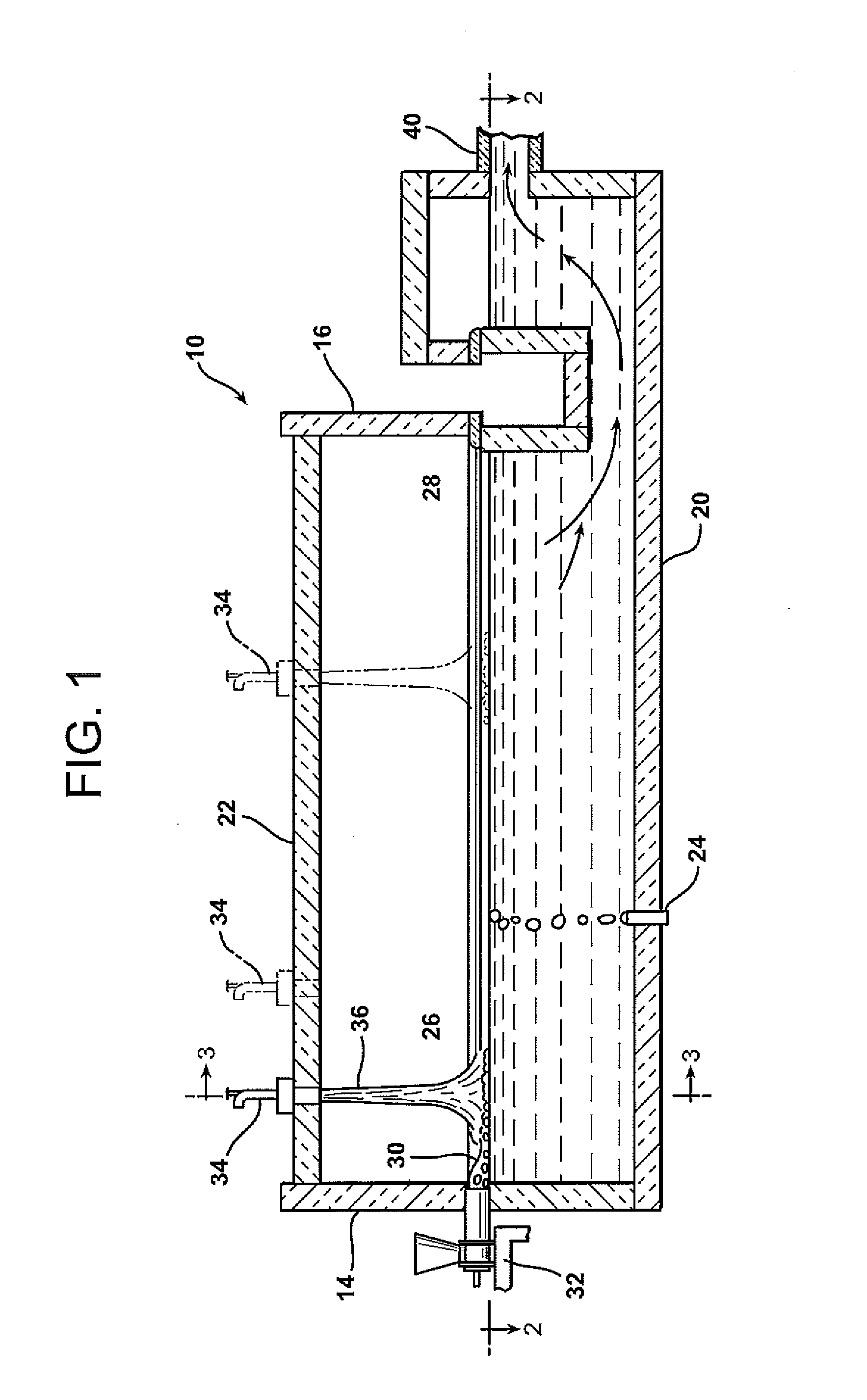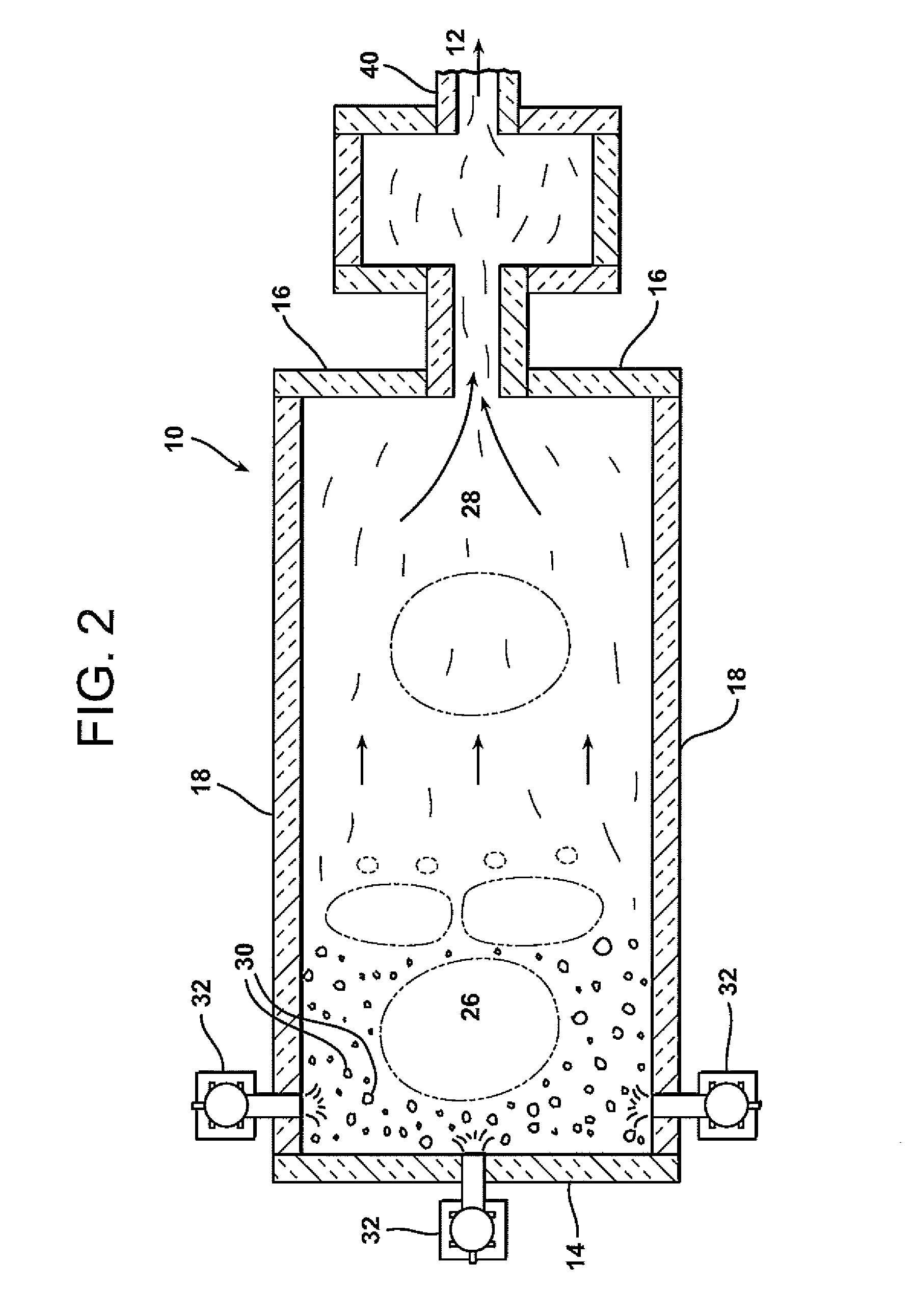Method of manufacturing high strength glass fibers in a direct melt operation and products formed there from
- Summary
- Abstract
- Description
- Claims
- Application Information
AI Technical Summary
Benefits of technology
Problems solved by technology
Method used
Image
Examples
examples
[0070]The glasses in the examples listed in Tables IIA-IIC were melted in platinum crucibles or in a continuous platinum-lined melter for determining the mechanical and physical properties of the glass and fibers produced there from. The units of measurement for the physical properties are: Viscosity (° F.), Liquidus temperature (° F.) and ΔT (° F.). In some examples the glasses were fiberized and Strength (KPsi), Density (g / cc), and Modulus (MPsi) were measured.
[0071]The fiberizing temperature was measured using a rotating spindle viscometer. The fiberizing viscosity is defined as 1000 Poise. The liquidus was measured by placing a platinum container filled with glass in a thermal gradient furnace for 16 hours. The greatest temperature at which crystals were present was considered the liquidus temperature. The modulus was measured using the sonic technique on a single fiber of glass. The tensile strength was measured on a pristine single fiber.
TABLE II-AGlassEx. 1Ex. 2Ex. 3Ex. 4Ex. ...
PUM
| Property | Measurement | Unit |
|---|---|---|
| Temperature | aaaaa | aaaaa |
| Temperature | aaaaa | aaaaa |
| Percent by mass | aaaaa | aaaaa |
Abstract
Description
Claims
Application Information
 Login to View More
Login to View More - R&D
- Intellectual Property
- Life Sciences
- Materials
- Tech Scout
- Unparalleled Data Quality
- Higher Quality Content
- 60% Fewer Hallucinations
Browse by: Latest US Patents, China's latest patents, Technical Efficacy Thesaurus, Application Domain, Technology Topic, Popular Technical Reports.
© 2025 PatSnap. All rights reserved.Legal|Privacy policy|Modern Slavery Act Transparency Statement|Sitemap|About US| Contact US: help@patsnap.com



